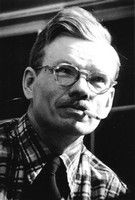Kenneth Stubbs |
 |
|
Kenneth Stubbs – ACME Fine Art, BostonLooking out at the sun-washed streets of Provincetown, Massachusetts, Kenneth Stubbs saw faceted planes of light and rooftops, merging and colliding. On tabletops, he found panoramas of angled color amid books and fruits and glass vessels. The Georgia-born painter, who lived in Washington, D.C., and on Cape Cod, delighted in transforming the visible world into a cubist reverie often bathed in a Renaissance glow. This retrospective of 22 oils, caseins, gouaches, and watercolors from the mid-1930s to the mid-1960s showcased an artist whose works appear fresh after half a century or more. In Grace Powell (1935), the only portrait in the exhibition, Stubbs was already corralling disparate elements into a single frame. The seated, dark-haired woman who dominates the foreground radiates an otherworldly serenity reminiscent of the aura Stubbs admired in Piero della Francesca's works. In the distance, however – straddling stripped-down bands of sea and sky – a cluster of houses pulses with geometric shapes and vibrant hues. The desire to explore multiple perspectives simultaneously flourished in the flattening and fragmenting of forms in Stubbs's more cubist still lifes and shorescapes. From the earth-toned Still Life with Fruit (ca. 1936) to the prismatic Glassware (1960), his paintings feature static objects animated by modernist approaches. Fruits become two-dimensional in harmony with slabs of cloth arrayed on a wooden table, and drinking glasses and books unfold in a single origami-like display. Although he ventured close to abstraction, Stubbs never abandoned his artistic connection to the observable universe, whether in the triangles and circles of Still Life with Berries (1952) or in the singing geometries of his luminous shorescapes. Always the line of a table or horizon lingers as a reminder that Stubbs's vision was, in fact, anchored in something recognizable to everyone. Joanne Silver, ARTnews, June 2012 (pp. 100-101)
|
See also: Show Announcement Works Shown Installation Photos Boston Globe Review |